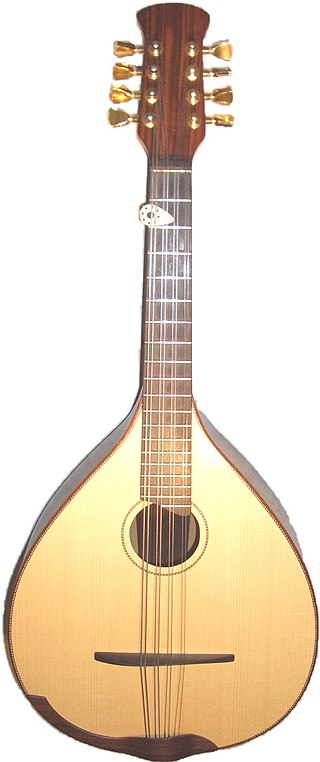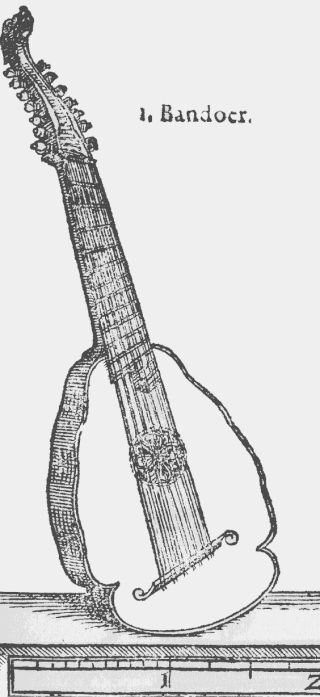
The flugelhorn, also spelled fluegelhorn, flugel horn, or flügelhorn, is a brass instrument that resembles the trumpet and cornet but has a wider, more conical bore. Like trumpets and cornets, most flugelhorns are pitched in B♭, though some are in C. It is a type of valved bugle, developed in Germany in the early 19th century from a traditional English valveless bugle. The first version of a valved bugle was sold by Heinrich Stölzel in Berlin in 1828. The valved bugle provided Adolphe Sax with the inspiration for his B♭ soprano (contralto) saxhorns, on which the modern-day flugelhorn is modeled.
Ternary form, sometimes called song form, is a three-part musical form consisting of an opening section (A), a following section (B) and then a repetition of the first section (A). It is usually schematized as A–B–A. Prominent examples include the da capo aria "The trumpet shall sound" from Handel's Messiah, Chopin's Prelude in D-Flat Major "Raindrop", and the opening chorus of Bach's St John Passion.

The mandola (US and Canada) or tenor mandola (Ireland and UK) is a fretted, stringed musical instrument. It is to the mandolin what the viola is to the violin: the four double courses of strings tuned in fifths to the same pitches as the viola (C3-G3-D4-A4), a fifth lower than a mandolin. The mandola, though now rarer, is an ancestor of the mandolin. (The word mandolin means little mandola.)
Scordatura is a tuning of a string instrument that is different from the normal, standard tuning. It typically attempts to allow special effects or unusual chords or timbre, or to make certain passages easier to play. It is common to notate the finger position as if played in regular tuning, while the actual pitch resulting is altered. When all the strings are tuned by the same interval up or down, as in the case of the viola in Mozart's Sinfonia Concertante for Violin, Viola and Orchestra, the part is transposed as a whole.

The baryton is a bowed string instrument similar to the viol, but distinguished by an extra set of sympathetic but also pluckable strings. It was in regular use in Europe until the end of the 18th century.

The bandora or bandore is a large long-necked plucked string-instrument that can be regarded as a bass cittern though it does not have the re-entrant tuning typical of the cittern. Probably first built by John Rose in England around 1560, it remained popular for over a century. A somewhat smaller version was the orpharion.
The Western concert flute is a family of transverse (side-blown) woodwind instruments made of metal or wood. It is the most common variant of the flute. A musician who plays the flute is called a flautist, flutist, or simply a flute player.

A multi-scale fingerboard is an instrument fretboard which incorporates multiple scale lengths. This allows each of the strings to have a different string tension and thus, balanced tonal characteristics.

The glasschord is a struck crystallophone resembling the celesta, invented circa 1785 by physicist M. Beyer of Paris. It creates sound by using cloth covered wooden hammers to strike glass tubes laid on a cloth strip, with no dampeners. The instrument has a range of three octaves, in various models from c' to c'', f' to f'', and g' to g''. The instrument was largely inspired by the glass harmonica created by Benjamin Franklin, and was given the name glasschord by him. On 6 July 1785, Thomas Jefferson that Franklin carried a version of the instrument with him, describing it as a sticcado.
The A-flat (A♭) clarinet is the most common member of the highest-pitched instruments of the clarinet family. It is just over half the length of the common B♭ clarinet, and pitched a minor seventh higher, a perfect fourth higher than the E♭ clarinet. As a transposing instrument it sounds a minor sixth higher than written, thus the lowest written note E3 sounds as concert C4 (middle C).

Otonality and utonality are terms introduced by Harry Partch to describe chords whose pitch classes are the harmonics or subharmonics of a given fixed tone (identity), respectively. For example: 1/1, 2/1, 3/1,... or 1/1, 1/2, 1/3,....
An Otonality is that set of pitches generated by the numerical factors (...identities)...over a numerical constant in the denominator. Conversely, a Utonality is the inversion of an Otonality, a set of pitches with a numerical constant in the numerator over the numerical factors...in the denominator.
An enharmonic keyboard is a musical keyboard, where enharmonically equivalent notes do not have identical pitches. A conventional keyboard has, for instance, only one key and pitch for C♯ and D♭, but an enharmonic keyboard would have two different keys and pitches for these notes. Traditionally, such keyboards use black split keys to express both notes, but diatonic white keys may also be split.

The orpharion or opherion is a plucked stringed instrument from the Renaissance, a member of the cittern family. Its construction is similar to the larger bandora and an ancestor of the guitar. The metal strings are tuned like a lute and are plucked with the fingers. The nut and bridge of an orpharion are typically sloped, so that the string length increases from treble to bass. Due to the extremely low-tension metal strings, which would easily distort the notes when pushed down, the frets were almost flush with the fingerboard, which was gently scalloped. As with all metal-strung instruments of the era, a very light touch with the plucking hand was required, quite different from the sharper attack used on the lute.

The octavin is a 19th century woodwind instrument with a conical bore and a single reed.

The hun is a Korean Xun-like globular flute made of baked clay or other ceramics.

In English early Baroque music, a broken consort is an ensemble featuring instruments from more than one family, for example a group featuring both string and wind instruments. A consort consisting entirely of instruments of the same family, on the other hand, was referred to as a "whole consort", though this expression is not found until well into the seventeenth century. The word "consort", used in this way, is an earlier form of "concert", according to one opinion, while other sources hold the reverse: that it comes from the French term concert or its Italian parent term concerto, in its sixteenth-century sense. Matthew Locke published pieces for whole and broken consorts of two to six parts as late as 1672.

Diatonic and chromatic are terms in music theory that are most often used to characterize scales, and are also applied to musical instruments, intervals, chords, notes, musical styles, and kinds of harmony. They are very often used as a pair, especially when applied to contrasting features of the common practice music of the period 1600–1900.
Jiří Družecký was a Czech composer, oboist, and timpanist.
"Air on the G String", also known as "Air for G String" and "Celebrated Air", is August Wilhelmj's 1871 arrangement of the second movement of Johann Sebastian Bach's Orchestral Suite No. 3 in D major, BWV 1068.

The English guitar or guittar is a stringed instrument – a type of cittern – popular in many places in Europe from around 1750–1850. It is unknown when the identifier "English" became connected to the instrument: at the time of its introduction to Great Britain, and during its period of popularity, it was apparently simply known as guitar or guittar. The instrument was also known in Norway as a guitarre and France as cistre or guitarre allemande. There are many examples in Norwegian museums, like the Norsk Folkemuseum and in British ones, including the Victoria and Albert Museum. The English guitar has a pear-shaped body, a flat base, and a short neck. The instrument is also related to the Portuguese guitar and the German waldzither.













